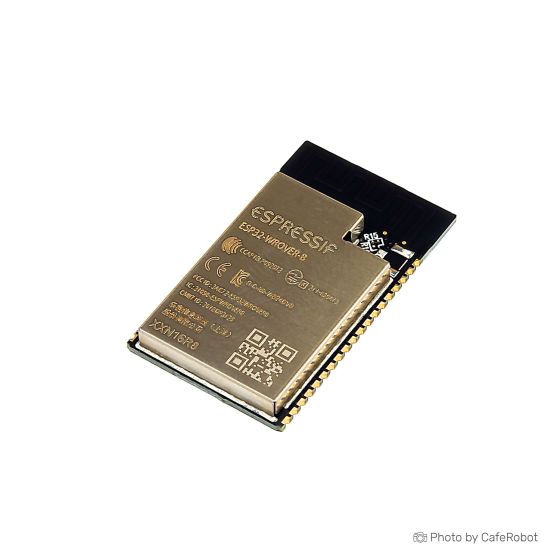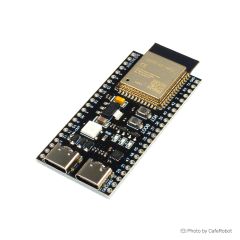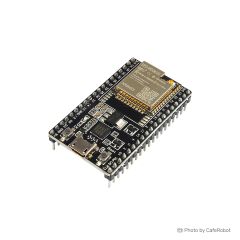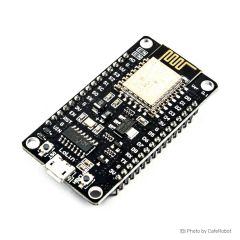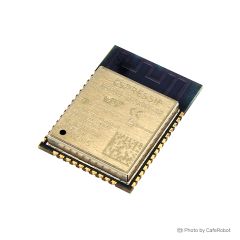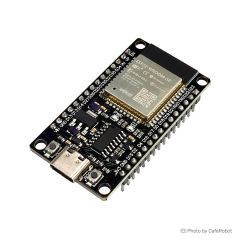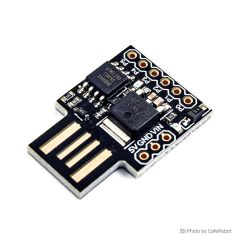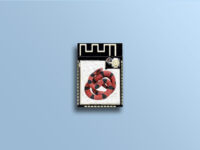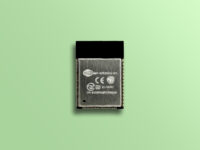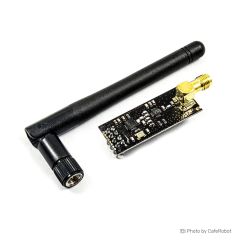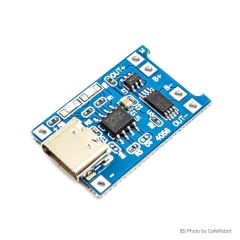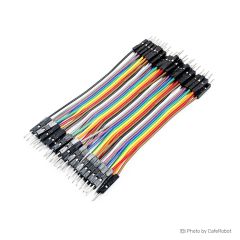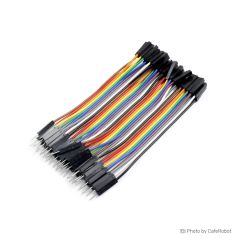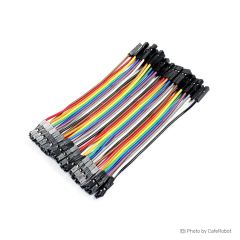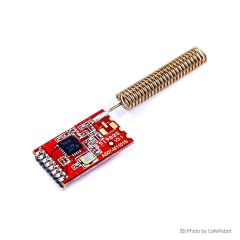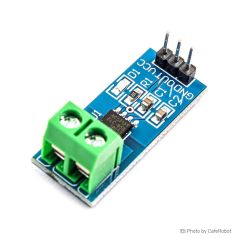ماژول ESP32-WROVER-B دارای حافظه فلش 16 مگابایت تولید Espressif
-
 ماژول ESP32-WROOM-32 تولید Espressif
ماژول ESP32-WROOM-32 تولید Espressif
COM-03-093 -
 ماژول ESP32-WROOM-32U تولید Espressif
ماژول ESP32-WROOM-32U تولید Espressif
COM-03-092 -
 ماژول ESP32-WROOM-32D تولید Espressif
ماژول ESP32-WROOM-32D تولید Espressif
COM-03-091 -
 ماژول ESP32-WROVER-B دارای حافظه فلش 16 مگابایت تولید Espressif
ماژول ESP32-WROVER-B دارای حافظه فلش 16 مگابایت تولید Espressif
COM-03-042 -
 ماژول ESP32-WROOM-32 دارای حافظه فلش 4 مگابایت
ماژول ESP32-WROOM-32 دارای حافظه فلش 4 مگابایت
COM-03-043 -
 ماژول ESP32-WROVER-IB تولید Espressif
ماژول ESP32-WROVER-IB تولید Espressif
COM-03-094
- +25 5 % 394٬700 تومان
- +50 7 % 385٬000 تومان
- +100 9 % 375٬300 تومان
- +300 12 % 365٬600 تومان
- +500 14 % 356٬000 تومان
اگر به دنبال یک ماژول جمعوجور با قابلیتهای وایفای و بلوتوث هستید، ماژول ESP32-WROVER-B انتخاب ایدهآلی است. این ماژول بر اساس چیپ ESP32 ساخته شده است که توسط شرکت Espressif Systems توسعه یافته و به عنوان یکی از پرکاربردترین و مقرونبهصرفهترین ماژولها در زمینه اینترنت اشیا (IoT) شناخته میشود. چیپ ESP32 با دو هسته پردازشی و قابلیتهای ارتباطی وایفای و بلوتوث، امکانات گستردهای را در اختیار شما قرار میدهد. این ماژول برای شبکه کردن سنسورها، هوشمندسازی ساختمان و سایر پروژههای الکترونیکی کاربردی است.
مشخصات فنی ماژول ESP32-WROVER-B دارای حافظه فلش 16 مگابایت تولید Espressif
- پردازنده: دو هستهای 32 بیتی Tensilica LX6 با فرکانس تا 240 مگاهرتز
- اتصال وایفای: 802.11 b/g/n، 2.4 گیگاهرتز، با پشتیبانی از حالت نقطه دسترسی و کلاینت
- اتصال بلوتوث: بلوتوث کلاسیک (BR/EDR) و BLE
- حافظه: 16MB حافظه Flash و 8MB PSRAM
- ولتاژ عملیاتی: 3V تا 3.6V
- دمای عملیاتی: -40 تا 85 درجه سانتیگراد
- حالتهای کممصرف: شامل حالت خواب عمیق
- پریفرالها: GPIO، UART، SPI، I2C، I2S، ADC، SD/SDIO/MMC، TWAI (CAN 2.0)، سنسور لمسی، سنسور دما
ویژگیهای ماژول ESP32-WROVER-B دارای حافظه فلش 16 مگابایت تولید Espressif
- پردازنده دو هستهای: دو هسته Xtensa LX6 که به صورت جداگانه قابل کنترل و برنامهریزی هستند.
- اتصال وایفای و بلوتوث: پشتیبانی از وایفای (802.11 b/g/n) و بلوتوث (کلاسیک و BLE).
- حافظه: 16MB حافظه Flash و 8MB PSRAM برای ذخیرهسازی برنامه و بافر داده.
- رابطهای جانبی متنوع: شامل SPI، I2C، UART، I2S، PWM، ADC، DAC و غیره.
- ویژگیهای امنیتی: بوت امن، رمزگذاری Flash، شتابدهنده رمزنگاری، و الگوریتم SHA.
- مصرف انرژی کم: شامل حالتهای صرفهجویی انرژی برای کاربردهای کممصرف.
- پشتیبانی از محیطهای صنعتی: قابلیت عملکرد در دمای وسیع و طراحی فشرده برای ادغام آسان.
- اکوسیستم توسعه: پشتیبانی از ESP-IDF و Arduino IDE برای برنامهنویسی.
پینهای ماژول ESP32-WROVER-B دارای حافظه فلش 16 مگابایت تولید Espressif
پین های تغذیه:
- 3V3: تأمین برق 3 ولت
- EN (Enable): پین فعالسازی، باید برای عملیات عادی به بالا کشیده شود
رابطهای ارتباطی:
- TXD، RXD: ارتباط UART
- SPI_HD، SPI_WP، SPI_CS، SPI_Q، SPI_CLK: ارتباط SPI
پینهای GPIO:
- GPIO0 - GPIO39: پینهای دیجیتال ورودی/خروجی عمومی
ورودیهای آنالوگ:
- ADC1، ADC2: پینهای ورودی آنالوگ
پینهای کنترل:
- CLK (Clock): پینهای خروجی ساعت
- EN (Enable): پین فعالسازی ESP32
نکات استفاده از ماژول ESP32-WROVER-B دارای حافظه فلش 16 مگابایت تولید Espressif
- بررسی ولتاژ و جریان: اطمینان حاصل کنید که ولتاژ و جریان ماژول با نیازهای پروژه شما سازگار است.
- اتصال صحیح: به درستی پینها را متصل کنید و از تطابق ولتاژ ورودی با دستگاه کنترل اطمینان حاصل کنید.
- استفاده از حافظه: از حافظه Flash و PSRAM برای ذخیرهسازی داده و برنامهها استفاده کنید.
این ماژول مناسب چه کسانی است؟
- علاقهمندان: برای ساخت پروژههای IoT و دستگاههای هوشمند.
- توسعهدهندگان IoT: مناسب برای ایجاد دستگاههای متصل و سیستمهای اتوماسیون خانگی.
- پروتوتایپسازان و توسعهدهندگان محصول: برای توسعه مدلهای Proof-of-Concept و تست ایدهها.
- کاربردهای صنعتی: برای سیستمهای نظارتی و کنترل در پروژههای صنعتی.
The ESP32-WROVER-B is based on the ESP32, which is a family of versatile and powerful microcontrollers developed by Espressif Systems. Espressif Systems is a semiconductor company headquartered in Shanghai, China, with a focus on providing low-power Wi-Fi and Bluetooth solutions for the Internet of Things (IoT). Founded in 2008, Espressif has gained prominence for its wireless communication technologies and microcontroller systems.
ESP32-WROVER-B integrates a dual-core processor, Wi-Fi (802.11 b/g/n), and Bluetooth connectivity (Bluetooth Classic and BLE) into a single module.
Key Features of ESP32-WROVER-B:
Here are the key features of the ESP32-WROVER-B briefly:
- Dual-Core Processor for multitasking: features two Xtensa LX6 CPUs, which can be individually controlled and programmed.
- Wi-Fi and Bluetooth connectivity: This makes it suitable for IoT applications that require wireless connectivity.
- 8MB PSRAM and 16MB Flash memory for storage: sufficient space for program storage, data buffering, and other requirements. The PSRAM is particularly useful for applications requiring high-speed and large-memory operations.
- Various peripheral interfaces for connectivity: Including SPI, I2C, UART, I2S, PWM, ADC, DAC, etc. facilitating connectivity with sensors, actuators, displays, and other external devices.
- Hardware-based security features: Secure Boot, Flash Encryption, Cryptographic Acceleration, and Secure Hash Algorithm (SHA).
- Low power consumption for energy efficiency: The ESP32-WROVER-B is designed for low-power operation, featuring various power-saving modes to conserve energy.
- Rich development ecosystem with ESP-IDF and Arduino IDE support.
- Industrial-grade temperature range support.
- Compact form factor for easy integration.
- Cost-effective solution for IoT and embedded projects.
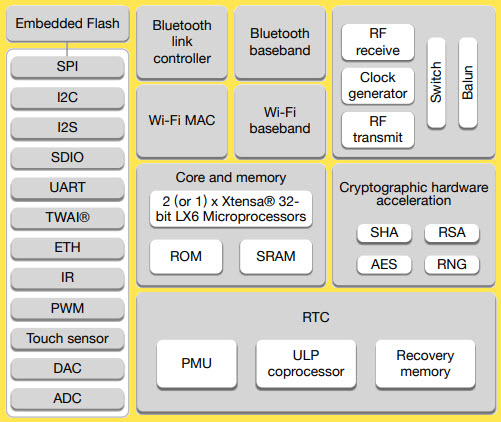
Technical specifications of ESP32-WROVER-B:
The technical specifications of the ESP32-WROVER-B module, developed by Espressif Systems, include details about its processor, wireless capabilities, memory, and various other features. Below are the key technical specifications:
- Processor: Dual-core 32bit Tensilica LX6 microprocessors operates from 80 to 240 MHz
- Wi-Fi:11 b/g/n, 2.4 GHz, With access point and client mode support.
- Bluetooth: Bluetooth Classic (BR/EDR) and Bluetooth Low Energy (BLE)
- Memory: 16 MB Internal Flash and 8MB PSRAM
- Security Features: Secure Boot, Flash Encryption, WPA3 and WPA2 security modes for Wi-Fi
- Operating Voltage:3V to 3.6V
- Operating temperature: -40 to 85℃
- Low-Power Modes: Yes, including Deep Sleep mode
- Peripherals:
- GPIO: Multiple General Purpose Input/Output pins (GPIO0 - GPIO39)
- UART, SPI, I2C, I2S: Serial communication interfaces
- Other External Interfaces: JTAG Debugging Support
- ADC: 16 channel 12-bit Analog signal input
- SD/SDIO/MMC Host: External storage support
- TWAI (CAN 2.0): Controller Area Network support
- Touch Sensor Inputs
- Temperature Sensor
ESP32-WROVER-B Pinouts
The ESP32-WROVER-B module has a specific pinout configuration that includes various GPIO (General Purpose Input/Output) pins, power supply pins, communication interfaces, and other essential connections. Here is a basic overview of the pinout for the ESP32-WROVER-B module:
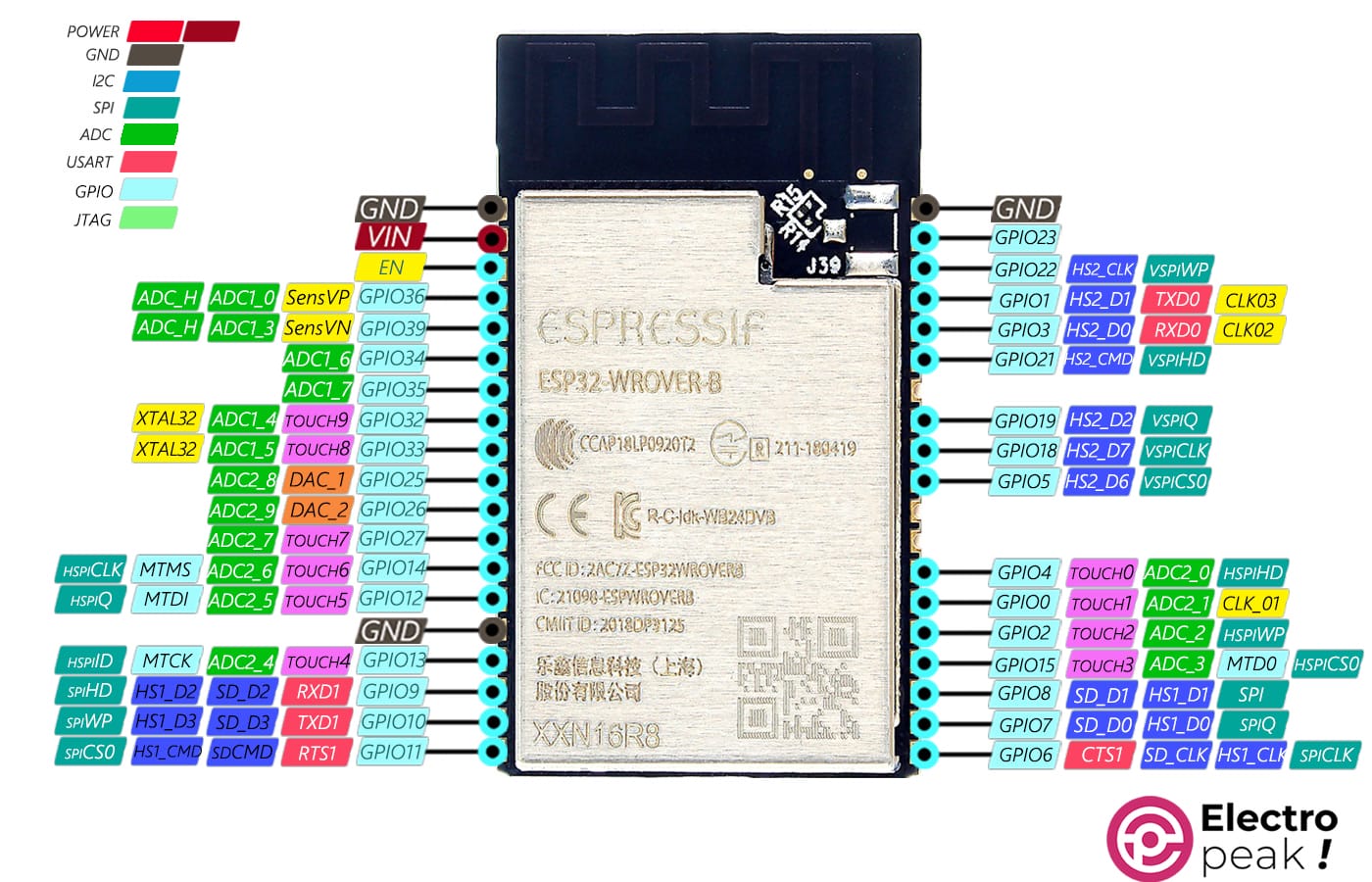
Here are some key pin categories:
-
Power Supply:
- 3V3: 3V power supply.
- EN (Enable): Enable pin; pulled high for normal operation.
-
Communication Interfaces:
- TXD, RXD: UART communication.
- SPI_HD, SPI_WP, SPI_CS, SPI_Q, SPI_CLK: SPI communication.
-
GPIO Pins:
- GPIO0 - GPIO39: General-purpose digital input/output pins. Some may have additional functions (e.g., GPIO16 is often used as a wake-up source from deep sleep).
-
Analog Inputs:
- ADC1, ADC2: Analog input pins.
-
Control Pins:
- CLK (clock): Clock out pins.
- EN (Enable): ESP32 Enabling pin.
Keep in mind that the specific pin functions can be configured dynamically in software, providing flexibility in adapting the ESP32-WROVER-B to various applications. When using the ESP32 in your projects, it's crucial to refer to the datasheet and reference documentation to ensure accurate pin configuration for your specific use case.
Programming ESP32-WROVER-B:
The ESP32-WROVER-B can be programmed using various development environments, including the Arduino IDE, PlatformIO, and Espressif's IoT Development Framework (IDF). It supports programming in C and C++.
Speed comparison between ESP32 and other MCs
Comparing the processor speeds of different microcontrollers, such as the ESP32, Arduino boards, and the STM32F4 series, involves considering factors like clock frequency, architecture, and performance. Here's a general comparison:
ESP32:
- Processor: Dual-core Tensilica LX6 microprocessors
- Clock Frequency: Adjustable up to 240 MHz
- Architecture: 32-bit RISC
- Notes: The dual-core architecture of the ESP32 provides additional processing power and flexibility for multitasking.
Arduino Boards (e.g., ATmega328p on Arduino Uno):
- Processor: ATmega328p
- Clock Frequency: Typically 16 MHz
- Architecture: 8-bit AVR
Notes: Arduino boards, including the popular Arduino Uno, use 8-bit AVR microcontrollers with a lower clock frequency compared to the ESP32. While suitable for many applications, they may have limitations in processing power and memory compared to more advanced microcontrollers.
STM32 boards (F4 series like STM32f429I or STM32f407):
- Processor: ARM Cortex-M4 core (32-bit)
- Clock Frequency: Depending on the specific STM32F4 variant, clock frequencies can range from tens of MHz to over 180 MHz.
- Architecture: ARM Cortex-M4 (32-bit)
Notes: The STM32F4 series, based on the ARM Cortex-M4 core, is a 32-bit microcontroller series that offers higher performance compared to 8-bit AVR microcontrollers. The STM32F4 series is known for its processing power, extensive peripheral set, and suitability for more demanding applications.
Comparison Summary:
The ESP32 stands out with its dual-core architecture and adjustable clock frequency up to 240 MHz, providing significant processing power for a variety of applications.
Arduino boards, using 8-bit AVR microcontrollers, have a lower clock frequency and are often used for simpler applications where processing power is not a critical factor.
The STM32F4 series, based on the ARM Cortex-M4 core, provides a balance between the 32-bit architecture and clock frequency, making it suitable for a wide range of applications, including those requiring more processing power than typical Arduino boards.
When choosing a microcontroller for a specific application, it's essential to consider the requirements of the project, including processing power, memory, and peripheral support. The choice often depends on the specific needs and constraints of the application.
Who is recommended to buy ESP32-WROVER-B?
The ESP32-WROVER-B is well-suited for a variety of applications and is popular among different groups of users. You can view the tutorials of various projects that have used ESP 32 from this link and find the right one for you.
Here are some categories of individuals and projects for which the ESP32-WROVER-B is particularly well-suited:
- Makers and Hobbyists: The ESP32-WROVER-B is an excellent choice for makers and hobbyists interested in building IoT projects, smart devices, and electronic gadgets.. You can use all kinds of available modules and sensors to add features to your ESP32.
- IoT Developers: The module is designed with the Internet of Things (IoT) in mind, making it suitable for developers creating connected devices, home automation systems, and other IoT applications. Its combination of Wi-Fi and Bluetooth capabilities is especially beneficial for such projects. Because of its low power consumption, you can use batteries to supply standalone ESP32 modules. For easy battery usage, you can use battery charger/discharger module. Also, you can find several IOT relevant modules here.
- Prototypers and Product Developers: For prototyping and developing proof-of-concept models, the ESP32-WROVER-B provides a quick and cost-effective solution. Its versatility allows developers to rapidly iterate and test their ideas before moving to production.
- Industrial Applications: With features like support for various communication protocols, low-power modes, and security features, the ESP32-WROVER-B is suitable for certain industrial applications. It can be employed in monitoring systems, control systems, and other industrial IoT solutions. You can use several relay modules and communication modules like CAN transceiver to prepare your ESP32-WROVER-B for industrial usage.
